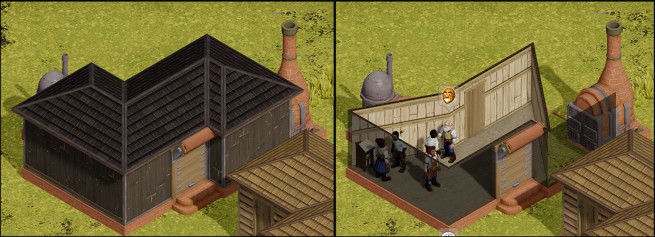The Road to Early Access basically looks like the Road to El Dorado, except the musical numbers are worse. Right now I am still in a land where I have to actually sit down and do all the stuff I’ve been putting off for the course of the product. Two things that fall into this category are “putting modules in the corner of a building” and “interrupts.” Oh, and “fixing the memory leaks.”

In The Colonies there are unfortunate occasions wherein real estate looks bigger on the outside than it is on the inside. (See also: “Mad Architects Of The Frontier And Their Terrible Creations”.)
Putting modules in the corner of a building has been something that, since the start of the project, would blow up the game. There were a number of things causing problems here: first off, the code to actually handle the case of inserting the small “module footer” that forms the foundation of a module was blowing up if you put it in the corner of a map. This has been fixed. Second, when we finished a module’s foundation, we would delete the edges on the floor plan, and merge the leftmost and rightmost edges together. Obviously, this is not the right thing to do if a foundation piece is at the leftmost, or rightmost, edge of a blueprint – you end up collapsing two edges together that are at 90 degrees. So this has been fixed for the outside of modules. The inside of modules still breaks, because there is some funny business going on with how we construct interiors that I have yet to track down – but we’re making progress on long standing issues.

